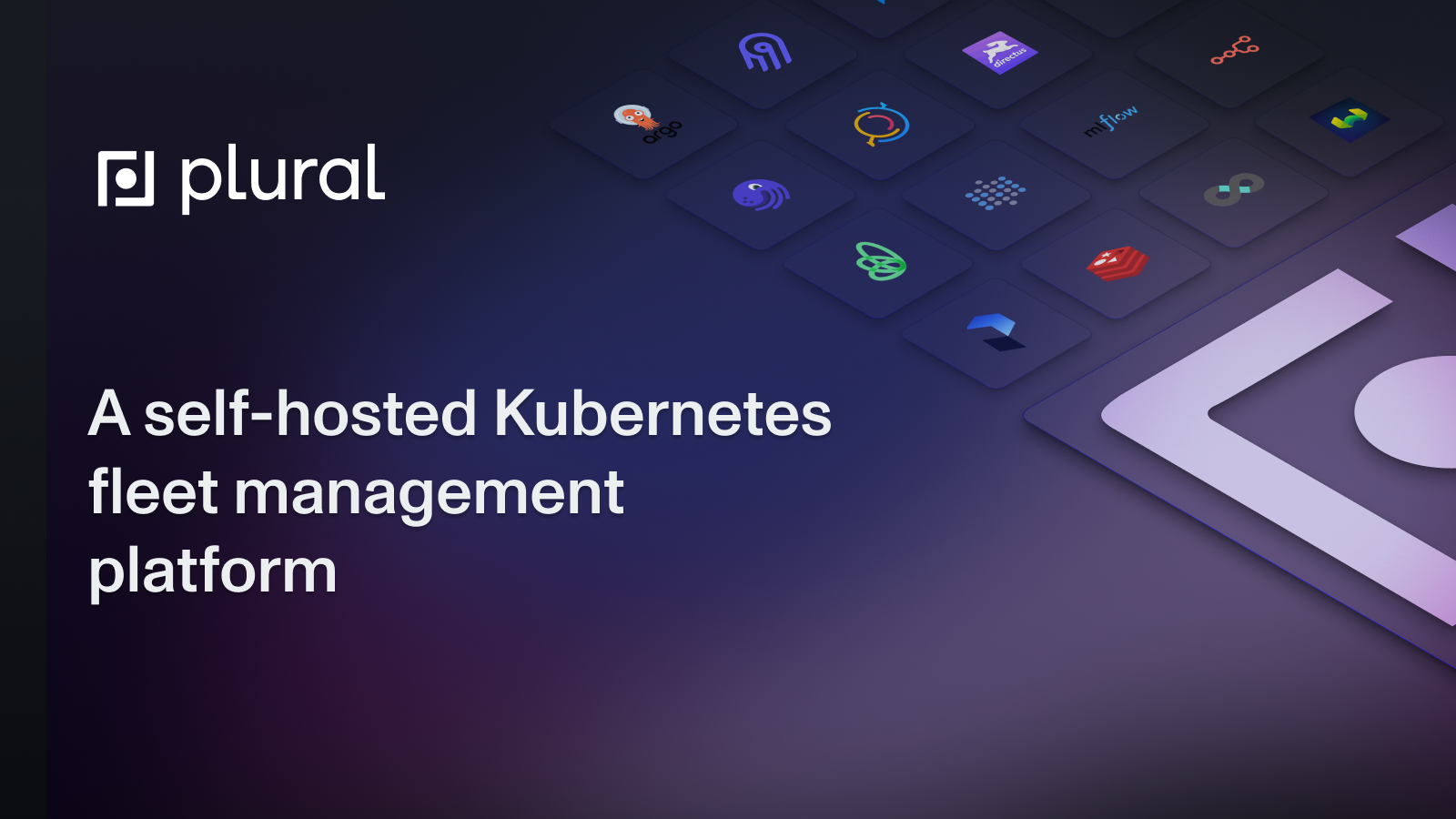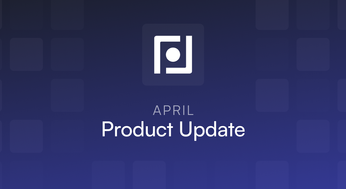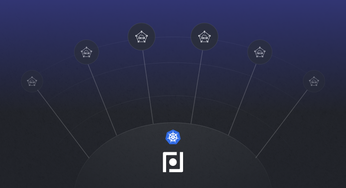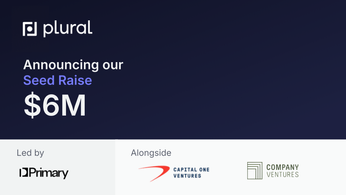
Managing Kubernetes Deployments: A Practical Guide
Master managing Kubernetes deployments with this comprehensive guide for DevOps, covering architecture, best practices, and automation strategies.
Table of Contents
Kubernetes offers incredible scalability and flexibility for modern application deployments. But actually managing those Kubernetes deployments can be tricky. This guide clarifies key Kubernetes concepts, architecture, and best practices. We'll cover core components like pods, services, deployments, and namespaces. Plus, we'll explore how to automate deployments, scale your applications, and keep your cluster secure. Whether you're just starting out or looking to improve existing skills, this guide helps you confidently manage Kubernetes deployments.
In this comprehensive guide, we'll explore the core concepts of Kubernetes, from its architecture and essential objects to networking, storage, and security best practices. We'll further explore how Kubernetes empowers DevOps, simplifies CI/CD pipelines, and enables multi-cloud deployments. Finally, we'll examine common challenges and explore solutions for streamlining Kubernetes operations through automation, helping you unlock the full potential of this powerful platform. Whether you're just starting with Kubernetes or looking to optimize your existing deployments, this guide provides actionable insights and practical advice to help you master the art of container orchestration.
Unified Cloud Orchestration for Kubernetes
Manage Kubernetes at scale through a single, enterprise-ready platform.
Managing Kubernetes Deployments: A Comprehensive Guide
Kubernetes deployments are your gateway to managing stateless applications, ensuring they run reliably and scale effortlessly. A deployment in Kubernetes acts as an overseer for your pods (the smallest deployable units in Kubernetes) and ReplicaSets (which maintain a specified number of pod replicas). Think of it as defining the ideal state of your application—how many instances should be running, which container image to use, and what resources they need. The deployment controller then takes over, continuously monitoring and adjusting the actual state to match your desired configuration.
Let's break down the key actions involved in managing deployments:
Creating and Updating Deployments
Creating a deployment starts with a YAML file. This file acts as a blueprint, specifying the desired number of replicas, the container image to use, port mappings, resource limits, and other crucial settings. You can find a detailed breakdown of deployment configuration options in the Kubernetes documentation. Updating a deployment is equally straightforward. Modify the YAML file—perhaps to change the container image to a newer version or adjust resource allocation—and then reapply it to your cluster. Kubernetes handles the rest, rolling out the changes gracefully. This declarative approach simplifies management and allows for easy version control of your deployments.
Rolling Back and Scaling Deployments
Things don’t always go as planned. If an update introduces unexpected issues, Kubernetes offers a simple rollback mechanism. Using the kubectl rollout undo deployment/<deployment-name> command, you can revert to a previous, stable version of your deployment. This provides a safety net, allowing you to quickly recover from problematic deployments. Scaling your application up or down to handle varying traffic loads is also a breeze. The kubectl scale deployment/<deployment-name> --replicas=<number> command allows you to instantly adjust the number of pods running, ensuring optimal performance and resource utilization. For more sophisticated scaling scenarios, consider Horizontal Pod Autoscaling (HPA), which automatically adjusts the number of pods based on metrics like CPU utilization or memory consumption.
Deployment Strategies: Minimizing Downtime
Kubernetes offers several deployment strategies to suit different needs. The simplest is the "recreate" strategy. While easy to implement, it involves stopping all existing pods before starting the new ones, leading to downtime. This strategy is best suited for applications where brief downtime is acceptable. For most applications, the "rolling update" strategy is preferred. This strategy gradually replaces old pods with new ones, minimizing or eliminating downtime. This ensures continuous availability during updates. More advanced strategies like blue/green and canary deployments offer finer control and reduced risk, especially for critical applications. A great resource for understanding these strategies is the Codefresh guide on Kubernetes deployment strategies. Choosing the right strategy depends on your application's specific requirements and tolerance for downtime.
Managing deployments effectively is crucial for running successful applications on Kubernetes. By understanding these core concepts and leveraging the tools Kubernetes provides, you can ensure your applications are resilient, scalable, and always available. For teams looking to streamline these operations across a large fleet of clusters, platforms like Plural offer a centralized management platform, simplifying deployment workflows and enhancing visibility across your entire Kubernetes infrastructure.
Key Takeaways
- Kubernetes streamlines containerized application management: Treat your infrastructure as a single resource pool, automating deployments, scaling, and management for increased efficiency.
- Observability and security are essential for Kubernetes success: Implement comprehensive monitoring, logging, and robust security measures, including RBAC and network policies, to ensure application stability and protection.
- Automation is key to efficient Kubernetes operations: Automate cluster maintenance, updates, and dependency management to reduce overhead and empower your team to focus on application development and deployment.
What is Kubernetes?
Kubernetes, often shortened to K8s, is open-source software that automates deploying, scaling, and managing containerized applications. Instead of manually managing individual servers, Kubernetes lets you treat your infrastructure as a single, unified pool of resources. This simplifies complex tasks like rolling out updates and scaling your applications to meet demand. If you're familiar with Docker, Kubernetes takes container management to the next level by orchestrating how and where those containers run.
Core Concepts and Components
Kubernetes operates on a control plane/worker node architecture. The control plane decides how and where applications run. It includes components like the API server, the central communication hub, the scheduler, which determines where each application runs, and controllers, which maintain the desired state of your applications. The worker nodes execute instructions from the control plane and run your containerized applications. These nodes house the necessary runtime environment, like Docker. This separation of concerns allows for efficient resource use and fault tolerance. Learn more about Kubernetes architecture in the official documentation.
The Evolution of Container Orchestration
Kubernetes’ roots lie in Google’s experience with container management, originating from their internal system called Borg. Drawing on over 15 years of running production workloads at Google, Kubernetes incorporates best practices and lessons learned. Now maintained by the Cloud Native Computing Foundation (CNCF), Kubernetes has become the industry standard for container orchestration. Its open-source nature fosters a vibrant community, driving continuous innovation. From its origins in managing Google's massive infrastructure, Kubernetes has become the go-to solution for organizations seeking to modernize application deployment and management with open-source tools.
Why Kubernetes Matters
Kubernetes has become essential for modern software development and deployment. It addresses the challenges of managing containerized applications at scale by providing a robust platform for automation, resilience, and flexibility. Whether you're a small startup or a large enterprise, understanding the benefits of Kubernetes can significantly impact your ability to deliver high-quality software efficiently.
Scalability and Portability
One of the primary reasons Kubernetes is so important is its ability to scale applications effortlessly. With Kubernetes, you can easily increase or decrease the number of running containers to meet demand. This dynamic scaling ensures your application remains responsive, even during peak traffic, preventing downtime and providing a consistent user experience. Kubernetes also simplifies rolling out updates and new features, minimizing service disruption. This scalability, and portability, allow you to deploy your applications on various infrastructures, from on-premise servers to public cloud providers like AWS, Google Cloud, and Azure. This flexibility gives you greater control over your infrastructure choices and avoids vendor lock-in.
Microservices Architecture Support
Kubernetes is ideally suited for managing microservices architectures, which have become increasingly popular. Microservices break down applications into smaller, independent services that communicate with each other. This approach offers several advantages, including improved fault isolation, faster development cycles, and easier scalability. Kubernetes provides the tools to deploy, manage, and scale these individual microservices, simplifying the complexities of a distributed architecture. Features like service discovery and load balancing ensure seamless communication between microservices, even as they scale dynamically.
Multi-Cloud Flexibility
Many organizations leverage multiple cloud providers to optimize costs, improve resilience, and avoid vendor dependency. Kubernetes excels in multi-cloud environments by providing a consistent platform for managing applications across different cloud providers. This allows you to deploy and manage your applications seamlessly across multiple clouds using the same tools and processes. This multi-cloud flexibility provides greater control over your infrastructure and lets you choose the best cloud provider for each workload. It also simplifies disaster recovery planning, as you can easily failover to a different cloud provider in case of an outage.
Explore platforms like Plural that enable teams to manage complex Kubernetes environments at scale across multiple clouds. Learn more at Plural.sh or schedule a demo to see it in action.
Deep Dive into Kubernetes Deployments
Understanding Kubernetes Deployment Fundamentals
The Role of Deployments in Managing Desired State
In Kubernetes, a Deployment acts as a supervisor for your application, ensuring it runs smoothly and reliably. You declare your desired state—how many instances of your application should be running, the container image to use, and the required resources—and the Deployment controller takes care of the rest. It continuously monitors the actual state of your application and makes the necessary adjustments to match your desired configuration. This automation simplifies application management and ensures your application remains available, even when facing failures.
ReplicaSets: Ensuring High Availability and Scalability
Deployments achieve this desired state management through ReplicaSets. A ReplicaSet's primary function is maintaining a specified number of identical pods, the smallest deployable units in Kubernetes, containing your application containers. If a pod fails, the ReplicaSet automatically launches a replacement, ensuring high availability. ReplicaSets also play a crucial role in scaling. When you increase the desired replica count in your Deployment, the Deployment controller updates the corresponding ReplicaSet, which then scales the number of pods accordingly.
Revision History and Rollbacks: Safeguarding Against Errors
Deployments maintain a revision history, allowing reverts to a previous version if an update introduces problems. By default, Kubernetes keeps the last ten revisions. This history provides a safety net, enabling quick rollback to a known good state if an update goes wrong, minimizing downtime and ensuring application stability during updates. Initiate a rollback using the kubectl rollout undo command, specifying the Deployment name and the target revision.
Performing Key Actions with Kubernetes Deployments
Creating and Updating Deployments: Using kubectl apply
Creating or updating a Deployment typically involves defining your desired state in a YAML file. This file specifies replica count, the container image, resource allocations, and other configuration details. Apply the YAML file using the kubectl apply -f <filename> command. Kubernetes then creates or updates the Deployment and its associated ReplicaSets and pods to match the defined configuration. This declarative approach simplifies Deployment management and allows tracking changes to your application configuration over time.
Scaling Deployments: Adjusting Replicas for Demand
Scaling a Deployment to handle changing traffic loads is straightforward with the kubectl scale command. Specify the Deployment name and the desired number of replicas; Kubernetes adjusts the running pod count to match. This dynamic scaling is crucial for ensuring application performance and availability during peak traffic. For example, use kubectl scale deployment/<deployment-name> --replicas=3 to scale a Deployment to three replicas.
Pausing and Resuming Deployments: Controlling Rollouts
Kubernetes provides fine-grained control over Deployment rollouts. Pause an update using kubectl rollout pause deployment/<deployment-name>, allowing inspection of your application's state before proceeding, particularly useful for sanity checks or verifying new version functionality. Resume the rollout with kubectl rollout resume deployment/<deployment-name>. This pause/resume functionality offers a valuable mechanism for managing deployment risks.
Rolling Back Deployments: Reverting to Previous Versions
If an update introduces issues, quickly revert to a previous revision using kubectl rollout undo deployment/<deployment-name>. This automatically scales down the problematic version and scales up the previous stable version. This rollback capability is a crucial safety net, minimizing downtime and ensuring application stability. Target a specific revision using the --to-revision flag for precise rollback control.
Advanced Deployment Strategies
Blue/Green Deployments: Minimizing Downtime
Blue/Green deployments minimize downtime by maintaining two environments: "blue" (current) and "green" (new). Traffic initially routes to blue. Once green is ready, traffic switches, making green live. Blue can then be scaled down or kept as a backup, allowing rapid rollback if issues arise with the new version.
Canary Deployments: Testing in Production
Canary deployments gradually roll out a new version to a small user subset, testing the new version in production with real traffic while minimizing the impact of potential issues. If successful, the new version gradually rolls out to remaining users. If problems surface, halt and easily roll back the rollout.
A/B Testing Deployments: Optimizing for User Experience
Similar to canary deployments, A/B testing deploys different application versions to different user groups, but focuses on comparing performance based on specific metrics (e.g., user engagement or conversion rates) for data-driven decisions about which version provides the best user experience.
Shadow Deployments: Validating Performance
Shadow deployments run a new application version alongside the existing one, mirroring production traffic to the new version without user impact. This validates the new version's performance and stability under realistic conditions before release, particularly useful for identifying potential performance bottlenecks or unexpected new version behavior.
Managing and Optimizing Deployments
Cleaning Up Old ReplicaSets: Efficient Resource Management
Avoid accumulating unnecessary ReplicaSets by configuring the revisionHistoryLimit setting in your Deployment. This controls how many old ReplicaSets are kept. Setting it to 0 removes all history, saving storage but preventing rollbacks. Choose a value balancing resource usage with rollback capabilities.
Using Labels and Selectors for Targeted Management
Labels and selectors are key for organizing and managing Kubernetes resources. Labels are key-value pairs attached to resources; selectors target specific resources based on their labels. This allows grouping related resources (Deployments and Services) and performing collective operations. For example, apply an app: my-application label to all resources associated with a particular application, then use a selector to target those resources for updates or scaling.
Leveraging Tools like Argo Rollouts for Enhanced Control
Tools like Argo Rollouts extend Kubernetes' deployment capabilities, providing advanced control over blue/green, canary, and other deployment strategies. Argo Rollouts offers features like automated metrics analysis during rollouts, enabling data-driven decisions about proceeding or rolling back, and supports more complex strategies like progressive delivery, gradually increasing traffic to a new version based on real-time performance metrics.
Streamlining Deployments with Plural
Managing Kubernetes deployments across many clusters can be complex. Platforms like Plural simplify this by providing a unified platform for managing and deploying applications across multiple Kubernetes clusters. Plural uses GitOps principles, managing deployments through your Git repository for consistency and auditability. It also provides tools to automate deployments, scaling, and rollbacks, reducing operational overhead and accelerating development workflows. Learn more about Plural or schedule a demo.
Kubernetes Architecture Explained
Understanding Kubernetes architecture is key to effectively managing and deploying applications. It's built on a control plane/worker node architecture. This structure separates the cluster's management responsibilities from the actual workload execution.
Control Plane Components and Their Roles
The control plane acts as the brain of the Kubernetes cluster, making global decisions, such as scheduling workloads and responding to cluster events. Let's break down the core components:
- API Server: The API server is the central communication hub for all interactions within the Kubernetes cluster. It exposes the Kubernetes API, which is used by both internal components and external users to manage the cluster.
- Scheduler: This component decides where to run your workloads (pods). It factors resource availability, node constraints, and data locality to make optimal placement decisions, ensuring efficient resource utilization.
- Controller Manager: The controller manager is a collection of individual controllers that continuously monitor the cluster's current state and work to match the desired state. These controllers handle tasks like replicating pods, managing services, and handling node failures.
- etcd: etcd is a distributed key-value store that holds the persistent state of the Kubernetes cluster. It stores all the configuration data and the real-time status of various objects within the cluster.
Worker Node Components and Cluster Management
Worker nodes are the workhorses of your Kubernetes cluster, running your containerized applications. Several key components operate on each node:
- kubelet: The kubelet is an agent on each node in the cluster, essential for maintaining the desired state of your applications. It's responsible for communicating with the control plane, receiving instructions about which pods to run, and ensuring pods are running and healthy.
- kube-proxy: This network proxy running on each node manages network rules and routing for services within the cluster. It ensures that traffic destined for a particular service is correctly routed to the appropriate pods.
- Container Runtime: The container runtime manages the execution of containers on the node. Popular container runtimes include Docker, containerd, and CRI-O. The containerd is the most common runtime included with Kubernetes distributions.
This separation of concerns between the control plane and worker nodes allows scalability, resilience, and easier management. By understanding the roles of these key components, you can more effectively deploy, manage, and troubleshoot your applications.
Essential Kubernetes Objects and Resources
Working with Kubernetes means understanding its fundamental building blocks. These objects represent your application's components and how they interact within the cluster. Let's break down some of the most important ones:
Pods, Services, and Deployments
Think of a Pod as the smallest deployable unit in Kubernetes. It encapsulates one or more containers, sharing resources like storage and network. Often, a Pod houses a single container for your application logic and perhaps a sidecar container for logging or networking tasks. Managing individual Pods directly can become complex as your application grows.
That's where Services come in. A Service provides a stable, abstract way to access the Pods backing your application. It maintains a consistent entry point even if Pods are rescheduled, or their IP addresses change. This allows for seamless communication between different parts of your application. Services also play a crucial role in exposing your application to the outside world.
Deployments manage the desired state of your Pods and Services. They ensure the correct number of Pods are running, handle updates and rollbacks, and generally automate the deployment process. A Deployment simplifies scaling your application or deploying a new software version.
ConfigMaps and Secrets
Managing application configuration can be tricky, especially in dynamic containerized environments. Kubernetes offers ConfigMaps to store non-sensitive configuration data like environment variables or configuration files. This keeps your configuration separate from your application code, making it easier to manage and update.
For sensitive information like passwords or API keys, Kubernetes Secrets can be used. Using a Secret ensures that confidential data is not included in your application code.
Resource Requests, Limits, and Quality of Service
Kubernetes allows you to define how resources like CPU and memory are allocated to your Pods. Resource requests specify the minimum amount of resources a Pod needs to function. Resource limits set the maximum amount a Pod can consume. These settings help prevent resource starvation and ensure fair resource allocation across your cluster.
Quality of Service (QoS) classes refine how Kubernetes handles resource allocation under pressure. By setting appropriate QoS classes, you can prioritize critical workloads and ensure they receive the resources they need, even when resources are scarce. Understanding these concepts is key to optimizing resource utilization and ensuring the stability of your Kubernetes deployments.
Organizing Kubernetes Resources for Efficient Management
As your Kubernetes deployments grow, efficiently managing numerous resources becomes crucial. A well-organized approach simplifies updates, troubleshooting, and overall maintainability. Let's explore some practical strategies for keeping your Kubernetes resources tidy and manageable.
Managing Multiple Resources with Single YAML Files
Kubernetes allows you to define multiple resources within a single YAML file. This is incredibly useful for deploying related components together, such as a Deployment and its corresponding Service. Separate each resource definition with `---` within the file. This practice streamlines deployment and ensures related resources are created in sync. You can then apply this single YAML file using `kubectl apply -f <filename>` to create all defined resources at once. This is a cornerstone of Infrastructure-as-Code (IaC) and GitOps practices, enabling version control and automated deployments. For example, you can define a Deployment, a Service, and a ConfigMap all within one file, ensuring they are always deployed together.
Using kubectl for Bulk Operations
The `kubectl` command-line tool provides powerful options for managing multiple resources efficiently. Beyond applying single YAML files, you can perform bulk operations across entire directories, simplifying tasks like applying updates or deleting obsolete resources. This is particularly useful when combined with a structured directory layout for your Kubernetes manifests. Imagine having separate folders for different environments like "production" and "staging." `kubectl` allows you to manage these environments independently and efficiently.
Leveraging Selectors (Labels) for Targeted Actions
Labels are key-value pairs that act as identifiers for your Kubernetes resources. Think of them as tags that allow you to group and filter resources. By using selectors, you can target specific subsets of resources for operations like scaling or deleting. For example, you could apply a label like `environment: production` to all resources related to your production environment. Then, using a selector in your `kubectl` commands, you can easily manage all production resources without affecting other environments. This targeted approach significantly improves operational efficiency and reduces the risk of unintended actions. For instance, scaling deployments only in the "production" environment becomes a simple task with labels and selectors.
Recursive Operations with the -R Flag
The `-R` (or `--recursive`) flag in `kubectl` extends the scope of your commands to subdirectories. This is invaluable when organizing your YAML files in a hierarchical structure. For instance, you might organize your manifests by environment (production, staging, development) or by application component. Using `kubectl apply -R -f <directory>` allows you to deploy or update all resources within that directory and its subdirectories, significantly simplifying large-scale deployments and updates. This is especially helpful when using Git repositories to manage your Kubernetes configurations, mirroring the repository structure in your deployment process.
Managing Resources from URLs
For even greater flexibility, `kubectl` supports applying resources directly from a URL. This is particularly useful for referencing configurations stored in a Git repository or a central configuration management system. Using `kubectl apply -f <url>` simplifies the deployment process and allows for quick resource management without needing to download files locally. This approach streamlines automation and enables dynamic configuration updates. Consider a scenario where your team updates a configuration file in a shared repository. With this feature, you can deploy those changes directly to your cluster without manual intervention.
Kubernetes Networking and Storage
Getting your application’s networking and storage right is key for successful Kubernetes deployments. These two pieces work together, ensuring your pods can communicate, and your data persists, even if individual pods or nodes fail.
Pod-to-Pod Communication and Service Discovery
Pods in Kubernetes are ephemeral. They’re created, destroyed, and rescheduled to different nodes constantly. This dynamic behavior makes direct communication between pods tricky. How can one pod reliably connect with another if its IP address might change? This is where Kubernetes service discovery comes in.
Kubernetes uses the Service resource as a solution. A Service acts as a stable, abstract endpoint for a group of pods performing the same function. It provides a consistent IP address and DNS name, regardless of where pods run. Kubernetes handles routing traffic to the healthy pods backing the Service, even as those pods change. This allows your application components to communicate seamlessly without needing specific IP addresses of individual pods.
Persistent Storage Options and Challenges
Data storage in a dynamic containerized environment requires special consideration. When a pod terminates, any data stored locally within that pod is lost by default. This isn’t ideal for most applications. Kubernetes uses PersistentVolumes (PVs) and PersistentVolumeClaims (PVCs) to address this.
A PersistentVolume represents a piece of storage in the cluster, provisioned by an administrator. It can be network-attached storage, cloud-provided storage, or even local disk. A PersistentVolumeClaim is a request for storage by a user or application. The separation of PV and PVC lets developers focus on how much storage they need and its characteristics (e.g., read/write speed), without worrying about the underlying storage infrastructure. Kubernetes matches PVCs to available PVs, automatically mounting the storage to the requesting pods. This abstraction simplifies storage management and makes your applications more portable across different environments.
While PersistentVolumes solves data persistence issues, managing them can introduce challenges, particularly around provisioning, resizing, and backups. Choosing the right storage solution and implementing robust backup strategies is crucial for long-term application health.
Secure Your Kubernetes Deployments
Security is paramount when managing Kubernetes deployments. A robust security posture requires a multi-layered approach, encompassing access control, network segmentation, and adherence to best practices, especially in multi-cloud environments. Let's explore some key strategies.
Role-Based Access Control (RBAC)
RBAC is fundamental to controlling access within your Kubernetes cluster. It lets you define roles that grant specific permissions to users and service accounts. By assigning these roles, you restrict the actions that entities are authorized to perform, thereby preventing unauthorized access to sensitive resources. This granular control minimizes the impact of security breaches and helps maintain a least-privilege model.
Network Policies and Pod Security
Network policies act as firewalls for your pods, controlling traffic flow within your cluster. They define rules that specify which pods can communicate with each other and external networks. By default, all pods can communicate freely with each other. Network policies let you restrict this communication, minimizing the impact of potential attacks. This segmentation isolates workloads and prevents unauthorized access. Combine network policies with pod security admission to further enhance security. These policies control pods' security context, limiting their access to system resources and preventing privilege escalation.
Best Practices for Multi-Cloud Environments
Managing Kubernetes across multiple cloud providers introduces additional security considerations. Consistency is key. Implement standardized security policies and configurations across all your environments. This ensures a uniform security posture, regardless of the underlying cloud provider.
Centralized management tools can help enforce these policies and simplify auditing. By leveraging platforms like Plural, organizations can implement unified governance, automate policy enforcement, and gain comprehensive visibility into their diverse cloud infrastructure. Regularly review and update your security policies to adapt to evolving threats and best practices. Stay updated on the latest security advisories and vulnerabilities for Kubernetes and your selected cloud providers. Consider implementing security information and event management (SIEM) tools to aggregate logs and monitor for suspicious activity across your multi-cloud environment.
By proactively addressing security concerns and adopting a consistent approach, you can effectively mitigate risks and protect your Kubernetes deployments in a multi-cloud world.
Best Practices for Kubernetes Management
Effectively managing Kubernetes involves understanding its lifecycle, leveraging the right tools, and proactively addressing common challenges. A well-structured approach ensures smooth operations, efficient resource utilization, and minimizes potential issues.
Understanding the Kubernetes Lifecycle
Much like nurturing a plant from seed to harvest, managing a Kubernetes system involves distinct stages, each requiring careful attention.
Planning and Design
Before diving into Kubernetes, clearly define your application's requirements, scalability needs, and resource constraints. This initial planning phase is crucial for avoiding costly rework later. Consider factors like the number of expected users, anticipated traffic patterns, and the type of workloads you'll be running. Thorough planning ensures your Kubernetes cluster is properly sized and configured from the outset. For example, understanding your application's resource needs will inform your decisions about node sizes and the number of nodes required.
Provisioning
Once you have a solid plan, the next step is provisioning the necessary infrastructure. This involves setting up the underlying virtual or physical machines that will host your Kubernetes cluster. Choose a Kubernetes installation method that aligns with your infrastructure and expertise, whether it's a managed service like Google Kubernetes Engine (GKE) or a self-managed setup using tools like kubeadm. Ensure your chosen infrastructure meets the resource requirements defined in the planning phase. Consider factors like network bandwidth, storage capacity, and the availability of compute resources.
Configuration
With the infrastructure in place, you need to configure the Kubernetes cluster itself. This includes setting up network policies, configuring resource quotas, and establishing security measures like Role-Based Access Control (RBAC). Define the necessary Kubernetes objects, such as Deployments, Services, and ConfigMaps, to deploy and manage your applications effectively. A well-configured cluster ensures smooth operation and efficient resource utilization. For example, setting resource quotas prevents one application from consuming all available resources, impacting other applications.
Operation and Maintenance
Once your applications are running, ongoing monitoring and maintenance are essential. Implement robust monitoring tools to track resource usage, application performance, and identify potential issues. Establish a process for applying security updates and patching vulnerabilities to keep your cluster secure. Regular maintenance ensures the long-term health and stability of your Kubernetes environment. This includes tasks like log analysis, performance tuning, and proactive scaling to meet changing demands.
Decommissioning
When a Kubernetes cluster reaches the end of its lifecycle, proper decommissioning is crucial. This involves safely shutting down the cluster, migrating applications to other environments, and reclaiming resources. A well-defined decommissioning process minimizes disruption and ensures data integrity. This might involve backing up data, terminating services gracefully, and deleting the underlying infrastructure.
Key Tools for Kubernetes Management
A variety of tools can simplify Kubernetes management, from development and deployment to monitoring and security.
Development Tools (e.g., Helm, Kustomize)
Tools like Helm, a package manager for Kubernetes, and Kustomize, a configuration customization tool, streamline application deployment and management. Helm allows you to package and deploy applications as reusable charts, simplifying complex deployments and promoting consistency. Kustomize enables customization of Kubernetes YAML configurations without templating, offering flexibility and maintainability. For instance, you can use Helm to deploy a complex application stack with a single command, while Kustomize allows you to tailor deployments for different environments.
Cloud-Based Solutions
Cloud providers offer managed Kubernetes services, such as Google Kubernetes Engine (GKE), Amazon Elastic Kubernetes Service (EKS), and Azure Kubernetes Service (AKS). These services simplify cluster management by handling tasks like provisioning, scaling, and upgrades. They provide a convenient way to leverage Kubernetes without managing the underlying infrastructure, allowing you to focus on application development and deployment. For example, using a managed service allows you to easily scale your cluster up or down based on demand without manually managing nodes.
Enterprise Tools
For larger organizations with complex Kubernetes deployments, enterprise-grade tools like Plural offer advanced features for multi-cluster management, policy enforcement, and automated deployments. These tools provide centralized control, enhanced security, and streamlined workflows for managing Kubernetes at scale. They often integrate with existing CI/CD pipelines and offer robust monitoring and observability capabilities. For example, Plural enables you to manage policies and deployments across multiple clusters from a single pane of glass, simplifying operations and ensuring consistency.
Addressing Common Kubernetes Challenges
While Kubernetes offers significant advantages, it also presents certain challenges that require careful consideration.
Managing Complexity
Kubernetes has a steep learning curve. Its numerous components, configurations, and networking concepts can be overwhelming for newcomers. Investing in training and leveraging simplified management tools can help mitigate this complexity. Start with small, manageable deployments and gradually expand as your expertise grows. Focus on understanding core concepts like pods, deployments, and services before tackling more advanced topics like network policies and resource quotas.
Networking Challenges
Configuring network policies, managing ingress traffic, and ensuring secure communication between pods can be complex. Understanding Kubernetes networking concepts and using appropriate tools for network visualization and troubleshooting are essential for resolving these challenges. Consider using service meshes like Istio or Linkerd for advanced traffic management and security. For example, a service mesh can simplify tasks like traffic splitting, canary deployments, and mutual TLS authentication between services.
Storage Considerations
Choosing the right storage solution, managing persistent volumes, and implementing robust backup and recovery strategies are crucial for data integrity and application availability. Evaluate different storage options based on your application's performance requirements, data size, and budget. Regularly test your backup and recovery procedures to ensure they function as expected. For example, consider using cloud-managed storage solutions for ease of use and scalability, or on-premise solutions for greater control and security.
Monitoring and Observability
Kubernetes generates a vast amount of data, making monitoring and observability essential for identifying and resolving issues. Implement comprehensive monitoring tools to track resource usage, application performance, and log events. Use tools like Prometheus and Grafana to collect metrics and visualize data, providing insights into the health and performance of your Kubernetes cluster and applications. Effective monitoring enables proactive issue resolution and ensures the stability of your deployments. For example, set up alerts for critical metrics like CPU usage, memory pressure, and pod restarts to quickly identify and address potential problems.
Monitor, Log, and Troubleshoot Your Kubernetes Cluster
Running Kubernetes in production means you need visibility into your cluster. A solid monitoring and logging setup helps you understand application performance, resource usage, and potential problems. This section covers gaining observability into your Kubernetes deployments and effectively debugging your applications.
Implementing Observability
Observability is key to understanding the complex interactions within your Kubernetes cluster. It goes beyond simple monitoring by providing insights into the why behind the what. Instead of simply seeing that a service is down, robust observability lets you trace the root cause, whether a resource constraint, network issue, or bug in the application code. This involves collecting and analyzing metrics, logs, and traces.
Metrics provide quantitative data about your cluster and applications, such as CPU usage, memory consumption, and request latency. Prometheus is a popular open-source monitoring system ideal for Kubernetes. It offers a powerful query language and integrates with popular visualization tools like Grafana. You can use pre-built dashboards or create custom ones to track relevant metrics.
Logs offer a detailed record of events within your cluster and applications. They are essential for debugging and auditing. A centralized logging system, like the Elastic Stack or Fluentd, aggregates logs from various sources, including containers, pods, and system components. This simplifies searching, analyzing, and correlating logs to identify issues.
Traces provide a detailed view of requests flowing through your application, helping pinpoint performance bottlenecks and understand dependencies between services. Jaeger and Zipkin are popular open-source tracing tools that integrate well with Kubernetes. Analyzing traces helps identify slow or failing components and optimize application performance.
Debugging Kubernetes Applications
When problems occur, effective debugging is crucial. Kubernetes offers several tools and techniques to troubleshoot your applications.
The kubectl command-line tool provides several commands for inspecting your cluster and applications. kubectl logs let you view container logs, while kubectl provides detailed information about pods, services, and other resources. kubectl exec allows you to execute commands inside a running container, which is valuable for interactive debugging. Understanding Kubernetes events is also important for troubleshooting. Events track changes and actions within the cluster, such as pod creation, scaling events, and resource allocation failures. View events using kubectl get events. Finally, explore specialized debugging tools designed for Kubernetes. Rookout and Squash offer advanced troubleshooting capabilities, including live debugging and remote breakpoints, without requiring code changes or restarts. These tools can significantly streamline your debugging process.
Plural's AI-driven insights, for instance, combine real-time telemetry to automate diagnostics and receive precise fix recommendations for complex issues across all clusters, providing actionable resolution steps and reducing troubleshooting time. Learn more at Plural.sh or book a demo.

Kubernetes in DevOps
Kubernetes has become essential for modern DevOps, offering powerful tools that streamline the software development lifecycle. Let's explore how Kubernetes enhances key DevOps processes.
CI/CD with Kubernetes
Kubernetes significantly improves Continuous Integration and Continuous Deployment (CI/CD) pipelines. Its declarative approach lets you define your desired application state (deployments, services, configurations) in YAML files. This enables infrastructure automation and version control, making deployments repeatable and predictable. Kubernetes features like rolling updates and rollbacks minimize service interruptions during deployments, ensuring a seamless user experience.
Platforms like Plural further enhance this by automating Kubernetes upgrades and simplifying dependency management, allowing teams to focus on delivering value quickly and reliably.
Infrastructure as Code for Kubernetes
Managing Kubernetes infrastructure effectively means treating it as code. Infrastructure as Code (IaC) automates the definition and management of your infrastructure through code rather than manual processes. Tools like Terraform and Ansible help automate the provisioning and management of your Kubernetes clusters, ensuring consistency and repeatability across environments. IaC simplifies complex tasks like cluster scaling, upgrades, and configuration management. Explore platforms like Plural that implement GitOps strategies for Infrastructure as Code (IaC) management, integrating seamlessly with tools like Terraform, Pulumi, and Ansible.
Automated Scaling and Rolling Updates
Kubernetes excels at automating essential operational tasks. It provides built-in mechanisms for deploying applications, performing rolling updates, and scaling your applications on demand. Rolling updates allow you to deploy new application versions with zero downtime, gradually replacing old pods with new ones. Kubernetes also supports automated scaling, automatically adjusting the number of pods based on CPU utilization, memory usage, or other custom metrics. These automation features frees your DevOps teams to focus on higher-level tasks like feature development and optimization.
Overcome Kubernetes Challenges
Kubernetes offers incredible power and flexibility, but it also presents unique challenges. Let's break down some common hurdles and how to address them.
Simplify Setup and Management
Setting up and managing Kubernetes clusters, especially at scale, requires specialized expertise. Even seasoned DevOps and SRE teams can find the learning curve steep. Fortunately, several approaches can simplify these processes. Managed Kubernetes services, like those offered by major cloud providers, abstract away much of the underlying infrastructure management. This allows teams to focus on deploying and managing applications rather than wrestling with the complexities of the control plane.
Furthermore, tools such as Plural streamline operations by automating tasks like cluster upgrades and dependency management. This reduces the operational overhead and allows teams to focus on delivering value, not managing infrastructure. Explore Plural's features for streamlined Kubernetes operations.
Handle Networking and Storage Issues
Networking within a Kubernetes cluster can be tricky. Ensuring efficient communication between pods and services requires careful planning and configuration. Features like node affinity and anti-affinity can help optimize pod placement and minimize latency. For example, you can co-locate related services on the same node for improved performance. Storage is another key consideration. Choosing the right persistent storage solution and integrating it seamlessly with Kubernetes is crucial, especially for stateful applications.
Balance Security and Flexibility in Multi-Cloud
Security is paramount in any environment, and Kubernetes is no exception. Implementing robust security policies, including Role-Based Access Control (RBAC) and Network Policies, is essential to protect your cluster and applications. As organizations increasingly adopt multi-cloud strategies, managing security and maintaining flexibility becomes even more critical. Centralized management tools like Plural can help ensure consistent security policies and operational practices across all your Kubernetes environments. This approach allows you to leverage the benefits of multi-cloud while minimizing the associated risks.
Streamline Kubernetes Operations with Automation
Managing Kubernetes efficiently often requires significant time and resources. But what if you could simplify these operations, freeing your team to focus on building and deploying applications? Automation is key. By automating key processes, you can drastically reduce operational overhead and improve the reliability of your Kubernetes deployments.
Automate Cluster Maintenance and Updates
Keeping your Kubernetes clusters up-to-date and secure is crucial, but the process can be daunting. Manually patching and upgrading clusters is time-consuming, error-prone, and can lead to downtime. Automating these tasks ensures a consistent and reliable update process. Imagine effortlessly applying security patches, upgrading core components, and managing version control across your entire infrastructure. Tools like Plural can automate these complex upgrade cycles, shrinking them from months to hours.
Simplify Dependency Management and Compliance
Kubernetes deployments often involve a complex web of interconnected services and dependencies. Managing these dependencies manually can quickly become a nightmare, especially as your application grows. Automated dependency management ensures that all components are correctly configured and updated, reducing the risk of conflicts and compatibility issues. Adhering to compliance regulations is essential for many organizations. Automation can help enforce compliance policies across your Kubernetes deployments, ensuring that your systems meet the required security and regulatory standards.
Optimize Resource Usage
Efficient resource utilization is key to controlling cloud costs and maximizing performance. Kubernetes provides tools for resource management, but manually configuring and adjusting these settings can be challenging. Automation allows you to dynamically allocate resources based on real-time demand, ensuring your applications have the resources they need without overspending. By optimizing resource allocation, you can improve application performance, reduce waste, and lower your overall infrastructure costs.
Related Articles
- The Quick and Dirty Guide to Kubernetes Terminology
- Kubernetes: Is it Worth the Investment for Your Organization?
- Why Is Kubernetes Adoption So Hard?
- Alternatives to OpenShift: A Guide for CTOs
- Cattle Not Pets: Kubernetes Fleet Management
Unified Cloud Orchestration for Kubernetes
Manage Kubernetes at scale through a single, enterprise-ready platform.
Frequently Asked Questions
Why should I use Kubernetes?
Kubernetes simplifies managing and scaling applications, especially in cloud environments. It automates deployments, updates, and resource allocation, freeing you from manual tasks and allowing you to respond quickly to changing demands. This efficiency translates to faster development cycles, improved reliability, and better resource utilization.
What are the main components of Kubernetes architecture?
Kubernetes uses a control plane/worker node structure. The control plane acts as the brain, managing the cluster and deciding where applications run. Worker nodes are the muscles, executing instructions from the control plane to run your applications. Key control plane components include the API server, scheduler, and controller manager. Worker nodes rely on components like the kubelet, kube-proxy, and a container runtime.
How does Kubernetes handle persistent storage?
Kubernetes uses Persistent Volumes (PVs) and Persistent Volume Claims (PVCs) to manage persistent storage. A PV represents a piece of storage, while a PVC is a request for storage by an application. This abstraction simplifies storage management and allows your applications to access persistent data regardless of where they run.
How can I secure my Kubernetes deployments?
Kubernetes security involves multiple layers. Role-Based Access Control (RBAC) controls who can do what within the cluster. Network Policies act as firewalls for your pods, controlling traffic flow. Following security best practices, especially in multi-cloud environments, is crucial for protecting your applications and data.
What are some common challenges with Kubernetes, and how can I overcome them?
Kubernetes can be complex to set up and manage. Using managed Kubernetes services or tools like Plural can simplify these tasks. Networking and storage can also present challenges. Careful planning with appropriate use of tools and techniques can address these issues. Finally, balancing security and flexibility, especially in multi-cloud environments, requires a thoughtful approach and consistent policies.
Newsletter
Join the newsletter to receive the latest updates in your inbox.










